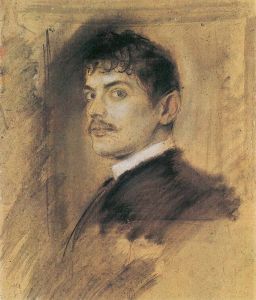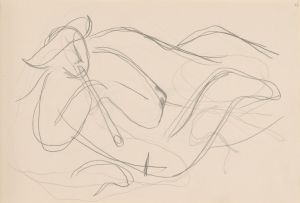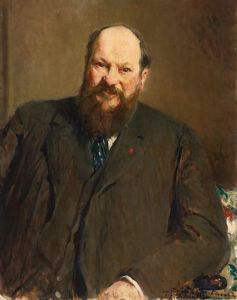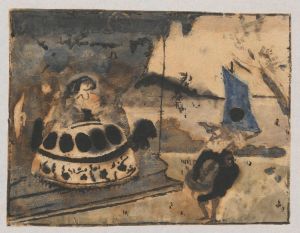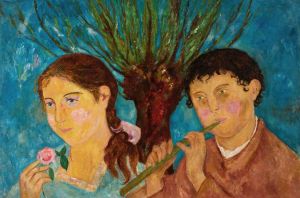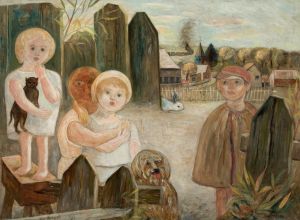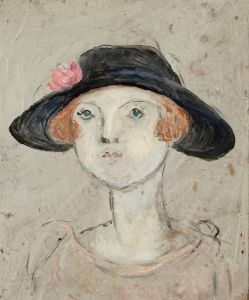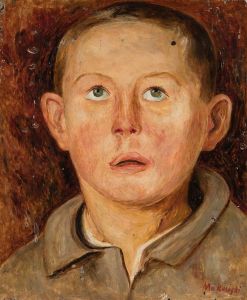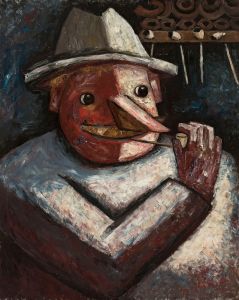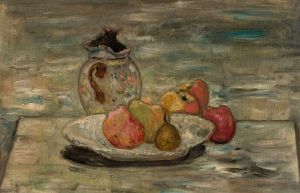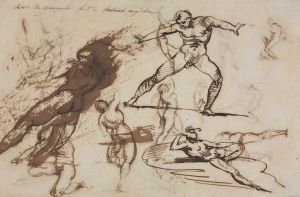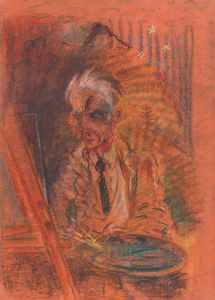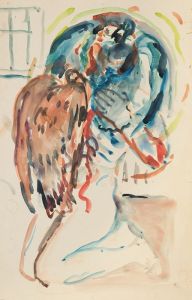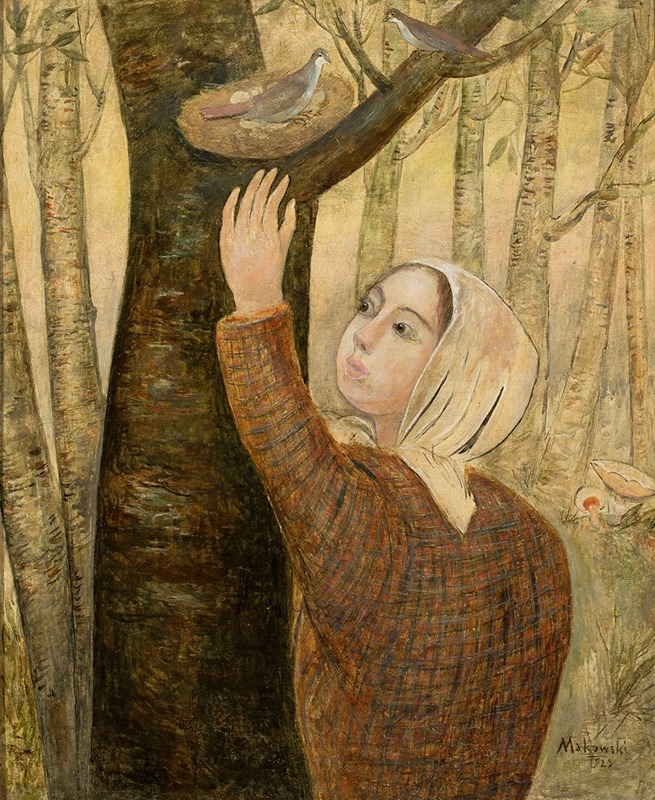
Self-portrait with a palette
A hand-painted replica of Tadeusz Makowski’s masterpiece Self-portrait with a palette, meticulously crafted by professional artists to capture the true essence of the original. Each piece is created with museum-quality canvas and rare mineral pigments, carefully painted by experienced artists with delicate brushstrokes and rich, layered colors to perfectly recreate the texture of the original artwork. Unlike machine-printed reproductions, this hand-painted version brings the painting to life, infused with the artist’s emotions and skill in every stroke. Whether for personal collection or home decoration, it instantly elevates the artistic atmosphere of any space.
Tadeusz Makowski was a Polish painter known for his unique style that combined elements of Post-Impressionism and Cubism, often focusing on themes of childhood and innocence. One of his notable works is "Self-portrait with a Palette," which reflects his distinctive approach to art and his personal artistic journey.
"Self-portrait with a Palette" is a significant piece in Makowski's oeuvre, showcasing his introspective nature and his dedication to the craft of painting. Although specific details about the creation date of this particular work are not widely documented, it is known that Makowski was active during the early 20th century, a period marked by significant changes and experimentation in the art world.
Makowski was born on January 29, 1882, in Oświęcim, Poland. He initially studied classical philology at the Jagiellonian University in Kraków before pursuing art at the Academy of Fine Arts in Kraków. His early work was influenced by the Young Poland movement, which was characterized by a focus on national identity and a break from academic traditions. In 1908, Makowski moved to Paris, where he became part of the vibrant artistic community and was exposed to various avant-garde movements.
In Paris, Makowski's style evolved as he absorbed influences from artists like Paul Cézanne and the Cubists. His work began to reflect a synthesis of these influences, characterized by simplified forms, a muted color palette, and a focus on geometric shapes. "Self-portrait with a Palette" exemplifies this style, as it likely features Makowski himself holding a palette, a common motif in self-portraits that symbolizes the artist's identity and creative process.
Makowski's self-portraits are notable for their introspective quality. They often depict the artist in a contemplative pose, suggesting a deep engagement with his own thoughts and emotions. This introspection is a hallmark of Makowski's work, which frequently explores themes of solitude and the inner life of the individual. His self-portraits are not just representations of his physical appearance but also reflections of his artistic philosophy and personal experiences.
Throughout his career, Makowski remained committed to exploring the world through the eyes of a child. His paintings often feature children, toys, and scenes from everyday life, rendered with a sense of wonder and simplicity. This focus on childhood is evident in his self-portraits as well, where he often portrays himself with a childlike innocence and curiosity.
Makowski's work, including "Self-portrait with a Palette," has been exhibited in various galleries and museums, both in Poland and internationally. His contributions to modern art have been recognized for their unique blend of traditional and avant-garde elements, as well as their emotional depth and sincerity.
Tadeusz Makowski passed away on November 1, 1932, in Paris, leaving behind a legacy of work that continues to be celebrated for its originality and emotional resonance. "Self-portrait with a Palette" remains an important piece in understanding Makowski's artistic journey and his enduring impact on the art world.





